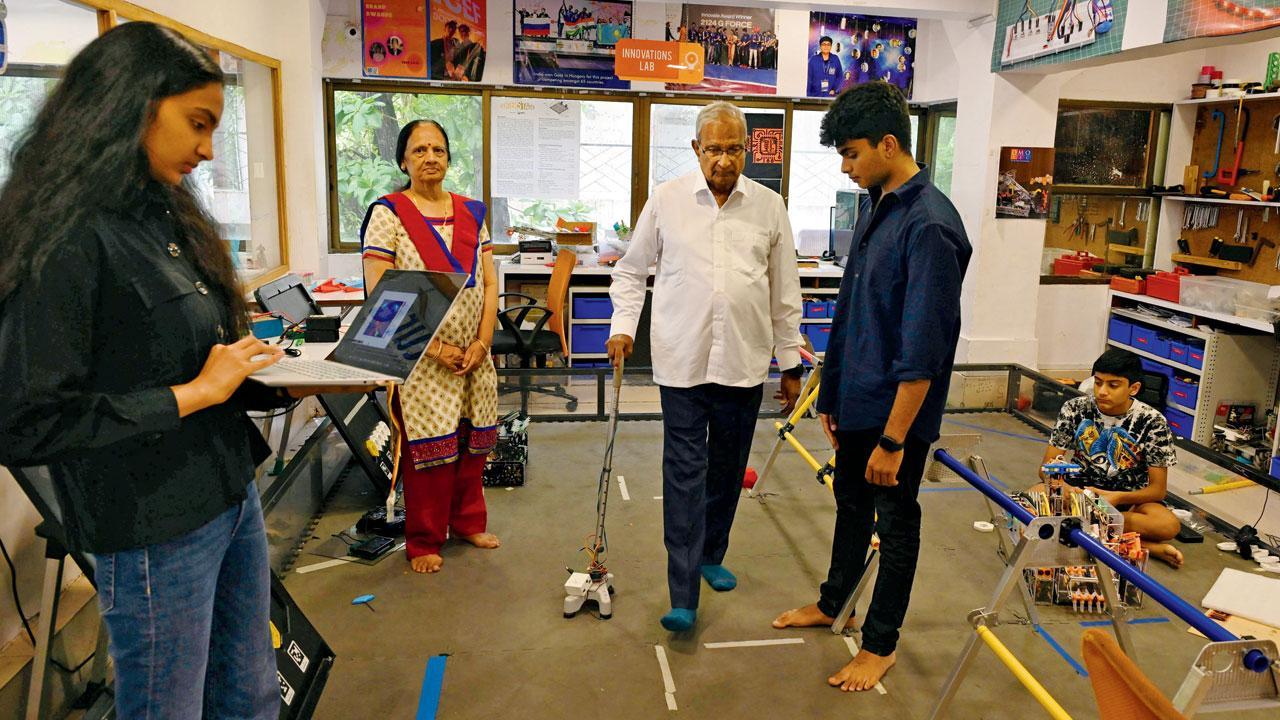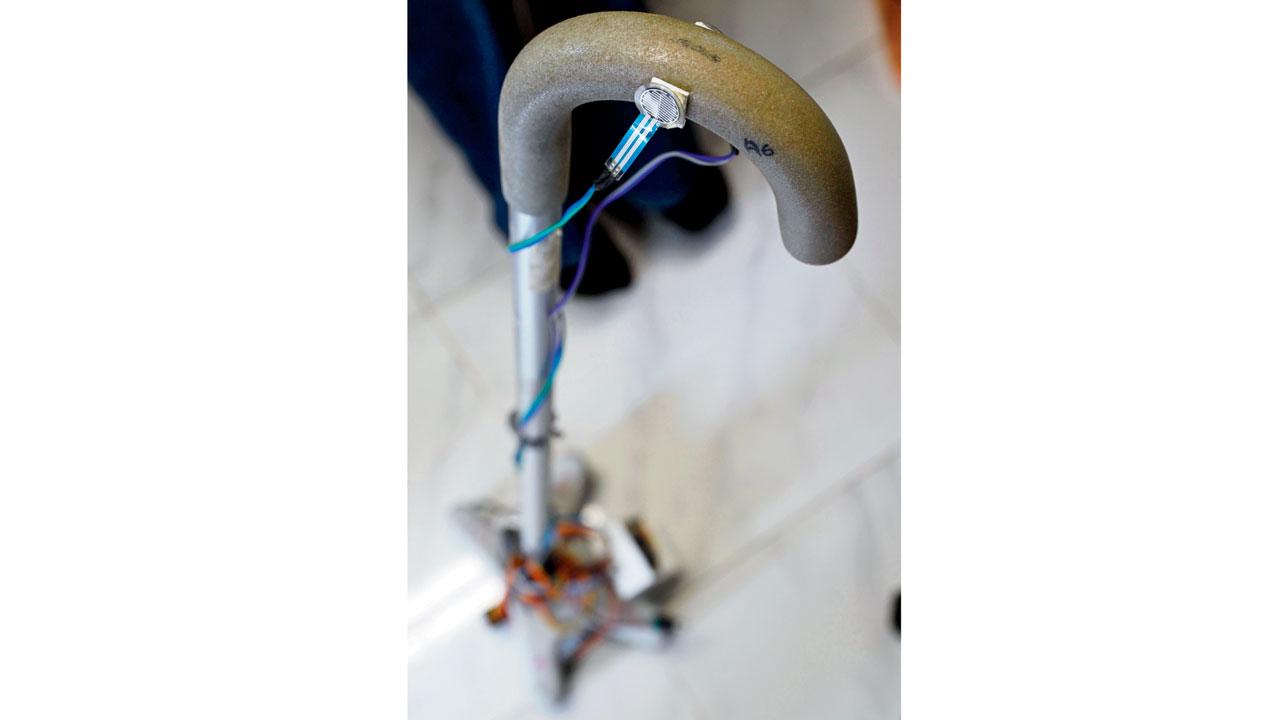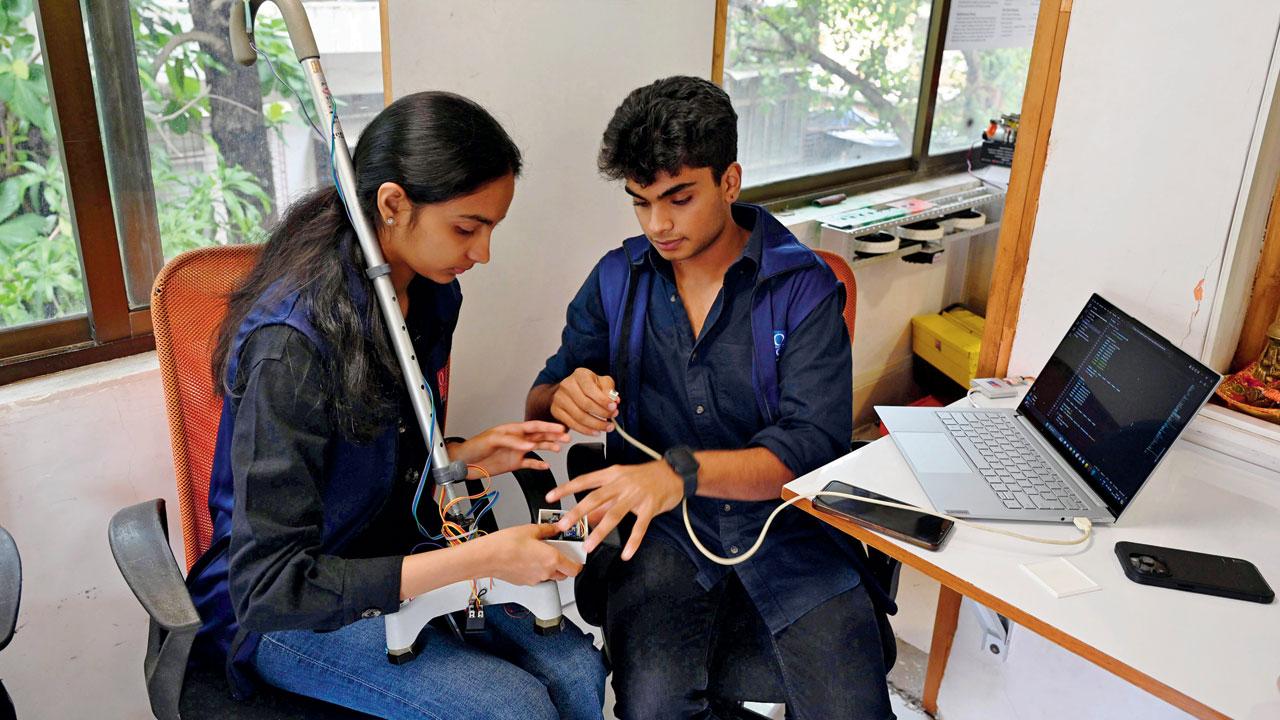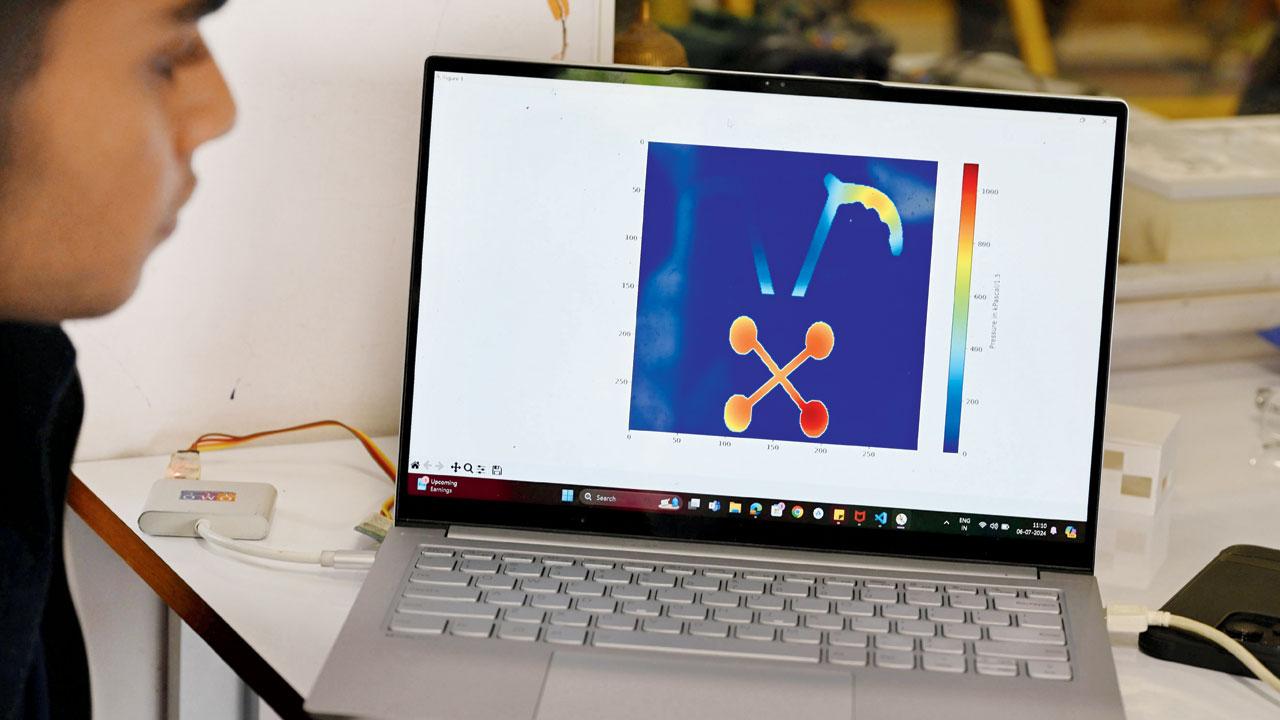Technology and love for their grandparents led two teens to invent a specially designed circuit that could change the way mobility disorders are diagnosed in the future

Gajendra Boriawala (with the walkfit stick) tests out the equipment as the teens measure the data. Pics/Ashish Raje
The simple act of taking a step involves 200 muscles functioning in a coordinated motion. Students might groan upon hearing yet another complex factoid during their Biology lecture. Rahi Shah and Hriday Boriawala are different. Their latest invention is built around this unique fact.
ADVERTISEMENT
The two 17-year old students of RN Podar International School in Santacruz are inventors of Walkfit that uses pressure sensors to monitor movement, pressure and balance. The idea, Shah reveals, was born through a familial bond. “Both of our grandparents underwent operations for mobility a couple of years ago. My grandmother had a hip replacement, while Hriday’s grandmother had a knee replacement,” she shares. During the recovery period, the teens observed that the senior citizens often found it difficult to express their issues or experiences.

Gyro sensors measure direction of tilt
“Many older people cannot express what they experience, and sometimes, won’t even speak up about it,” Shah observes, “This makes it difficult for doctors or even loved ones to truly diagnose the efficacy of treatment. We do not find out till the problem is unavoidable.” As always, the kids turned to technology for ideas. The duo are also students at the Omotec centre in Vile Parle, where they are familiarising themselves with coding and robotics.

A close-up shot of pressure sensors on the handle
It is at the Vile Parle centre that we catch up with the duo, along with Boriawala’s grandparents who kindly joined us for a demonstration. Boriawala remarks, “I was already learning coding and machine learning at the centre, and I am also interested in electronic engineering.” The two interests, plus a desire to help their grandparents gave them the idea of a monitoring device.
Testing the equipment
At first glance, the walkfit appears to be a simple walking support stick with its four-prong grip. Look closely and the wires running down the handle come into view. “The prototype is the circuitry, not the stick,” he points out. “We wanted to create something small that could be easily adapted onto any walking stick. It is feasible and economical,” Shah adds. It took the duo two years to create a working model.

Rahi Shah and Hriday Boriawala working on their invention
As they hand over the stick to Boriawala’s 80-year-old grandfather, Gajendra Boriawala, we are able to observe it in operation. The stick is armed with two pressure sensors on the handle and four on the bottom grip — one on each leg. In addition to this, it holds a module with gyro sensors towards the bottom. “These help to co-relate pressure readings with angle of tilt to predict the chances of a fall,” Shah explains. The data derived from these sensors is relayed via Bluetooth to their laptop where it is displayed on a pressure heatmap, along with projected readings.
The live relay of the data is analysed by a machine learning module and an algorithm coded using Python programming to derive projected analysis. “Machine learning is a neural network that derives values based on the parameters you set, and projects possible progressions,” explains Boriawala.
Shah reveals, “Neither of us are medical experts. So, we showed the videos, data, readings and analysis predicted to a qualified medical professional, Dr Anokhi Shah, MD, and also tested over 50 patients in several old-age homes across Vile Parle. They helped us figure out how to read this information. For instance, if point A is where the pressure reading is, then X is a possible diagnosis.”

A heatmap depicts the pressure points
We watch the colour changes on the pressure map on the laptop with every step. Boriawala elaborates that the Force Sensitive Resistors (FSR) on the handle and foot of the stick measure the pressure applied by the holder and its weight bearing. “For instance, we learned from the doctors that if the patient has a hip problem, they are bound to lean to the front. Similarly, if the pressure on the front two prongs is beyond a defined value, then there could be an issue with their lower back,” he explains.
Potential benefits
This opens up immense possibilities across the board. “The data will help medical professionals understand the nature of the problem and even facilitate early diagnosis of motor disabilities. They will also be able to monitor day-to-day changes, and be proactive in their treatment plans with accurate information,” Shah points out.
While they have been working on the invention with financial support from their families, they already are catching the eye of experts. The duo showcased it at the IIT Tech Fest and the World Stem and Robotics Olympiad (WSRO) in 2023. Armed with AI and Machine Learning, these young geniuses are already planning big. “We hope to keep working on this, and develop it into an app. Maybe the information could be sent to family or caregivers and alert them in case of emergencies, or help them monitor progress even when they are away from the patients,” the Vile Parle-based Boriawala remarks. Ask them if they are apprehensive of AI stepping into everything, and the quick answer is no. “We understand the apprehension, but technology is a tool and needs to be used for the good,” Shah remarks as we wrap up another walk.
What is it?
The walking stick is equipped with pressure and gyro sensors to track a patient’s challenges in mobility, direction of tilting and pressure points.
How it works?
The sensors monitor the pressure and direction during every movement. The gyro sensors track the degree of tilt to predict the possibility of a fall.
Who it affects/benefits?
Who is it for? The technology can enable a detailed diagnosis of mobility issues using a heat map and pressure. It can also be developed into an emergency alert mechanism to help senior citizens.
 Subscribe today by clicking the link and stay updated with the latest news!" Click here!
Subscribe today by clicking the link and stay updated with the latest news!" Click here!







